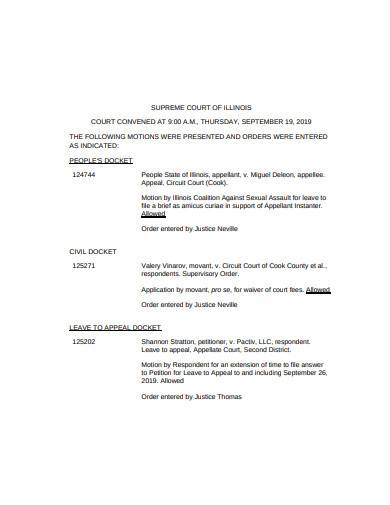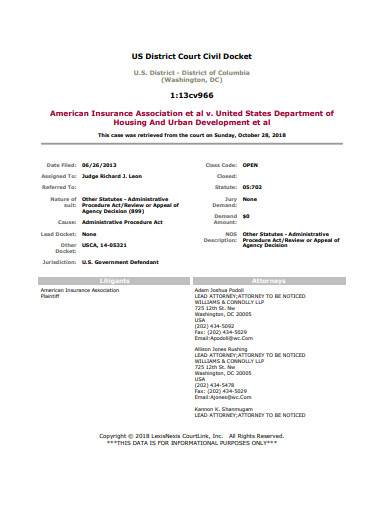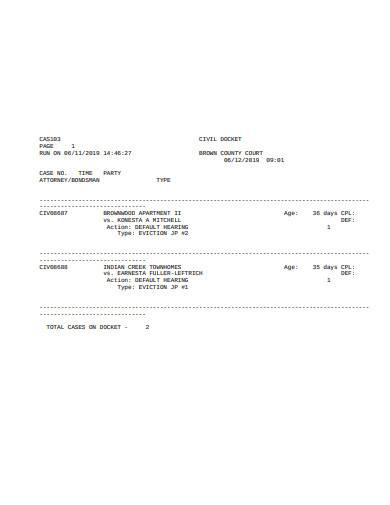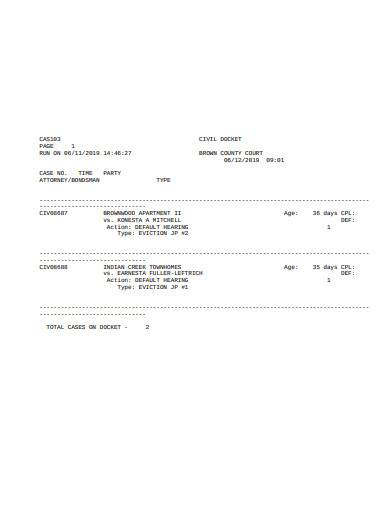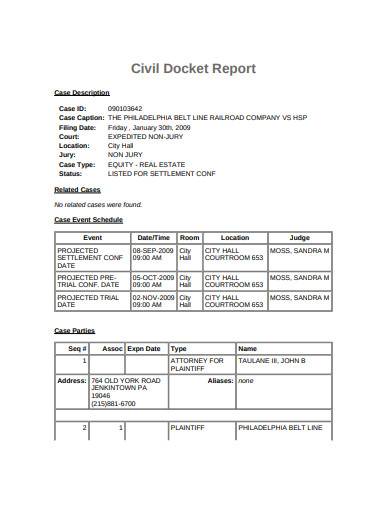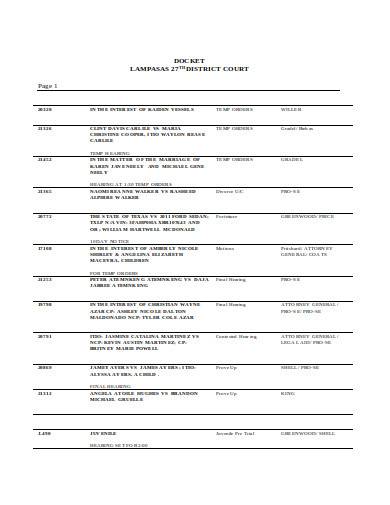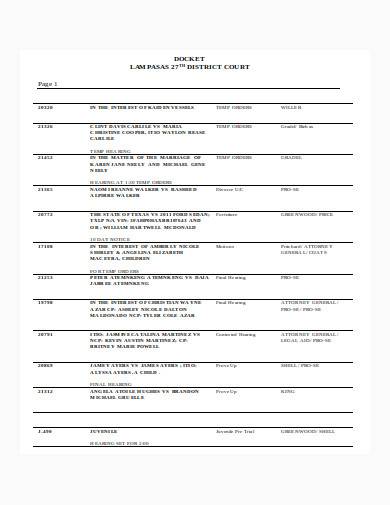Law and order are essential to the life of human beings. With such a complex social structure coupled with sentience beyond any other organism, humans genuinely are an incredible species. However, with high intelligence also comes the ability to do uncivilized actions that need addressing. Hence, the creation of the courts of law, the civil code, various legal contracts and documents, and a docket to schedule these endeavors.
What Is a Civil Docket?
Legal notices, rental leases, and complaint forms: what do all these documents have in common? They’re all a civil way of telling someone off or conducting business. However, another thing these items have in common is their need to enforce the order. Civility, unfortunately, is a core concept that not everyone applies, so there are times where these legal documents get breached. In cases where contracts and agreements are violated, they’re most commonly brought to a civil court to be settled.
Yet, all those cases eventually pile up on the court’s schedule, and the problem then becomes that of setting a priority for them all. This is where a civil docket comes in handy: this allows you to schedule for all pending cases properly. Court dockets are not only valuable for time management and efficiency but are essential to keeping the peace of the peacemaker, so to speak.
Right On the Docket
Have you ever heard the idiom “right on the docket?” In what context was it uttered? Perhaps it was during the time your mother gave you a grocery checklist of things to buy. Or maybe your manager gave you timely matters to deal with. Whatever the reason, the context of the words still hold true: a docket being a list of items with high priority. Civil court dockets work in the exact same way since they arrange hearings, appearances, and other legal duties of individuals in a timely matter for peaceful and efficient use of time.
11+ Civil Docket Samples in PDF | DOC
Though exceedingly useful, civil dockets have the particulars of most legal documents that make them a pain to draft. As such, here are a few sample templates you can use to make your work easier and more accurate.
1. Supreme Court of Civil Docket Sample
2. County Circuit Court Civil Docket Template
3. Civil Docket for Cause Sample
4. District Court Civil Docket Example
5. Civil Rule Docket Sample
6. Civil Docket Template
7. Civil Docket in PDF
8. Formal Civil Court Docket Sample
9. Basic Civil Docket Template
10. Civil Docket Report Sample
11. Civil Docket Report in PDF
12. Civil Docket in DOC
How to Prioritize Items on a Civil Docket
A civil docket is used as a means to record various court activities. These activities range from various laws and acts to the happenings within the four walls. With all the data that needs to be recorded, how do you prioritize items on your civil docket? Here’s how to do so.
1. Identify Particulars in Each Case
With all those recorded cases, there bound to be a few within the same bracket or have various differences. As such, when docketing your items, it’s best to first find their particulars. What makes each different? What makes them the same? Is this case more important than this one? These are just a few questions you have to ask yourself when creating your civil docket.
2. Categorize Based on Criteria
What is the basis of your criteria? Will it be the severity of court cases? Or some other factor? Whatever your criteria are, docketing becomes more convenient when you categorize your items based on them. And it makes your work exceedingly convenient.
3. Manage Your Time
A schedule or civil docket is only useful if you stick to it. As such, it’s best to manage your time accordingly. Whether it’s rationing the hours for each case or making sure that your plan isn’t just another piece of paper, time management is a valuable asset.
4. Aim to be The Peacekeeper
Beyond a cliched title, being the peacekeeper is more than just running around in a cape and jumpsuit. Aiming to be the peacekeeper means drafting your civil docket in such a manner than most of the items within it are resolved within the set amount of time. Unfortunately, this isn’t as easy as slapping all the trials and times they should happen, so proceed with caution when drafting.
Civil dockets serve as both a means of documenting court activities and a schedule for trials and hearings. However, for them to be effective in these regards, they must be well-drafted and contain reliable information. With that said, if you want everything to be “right on the docket,” and for things run smoothly, a civil docket is a way to go.
Related Posts
FREE 9+ Engineering Project Proposal Samples
Sample Professional Letterhead Examples
FREE 5+ Sample Construction Work Order Forms
8+ Engineering Proposal Templates
9+ Project Execution Plan Templates
12+ Resume Samples
7+ Construction Worker Job Description Samples
24+ Sample Job Application Forms
8+ Sample Submittal Transmittal Forms
7+ Sample Engineering PowerPoint Templates
9+ Letter of Demand Samples
13+ Contractor Invoice Samples
Sample Employee Complaint Forms
9+ Design Engineer Job Description Samples
8+ Sample Engineering Resumes

